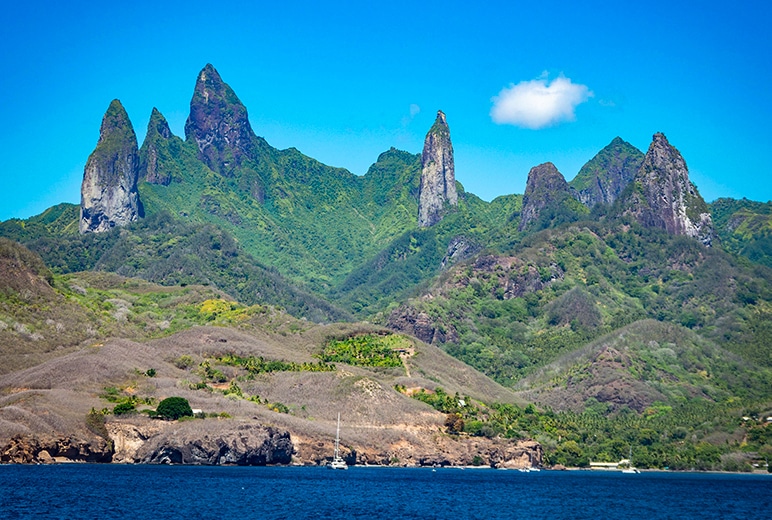
Hakahau, Ua Pou, Marquesas Islands
Truly off the beaten path, the tiny isle of Ua Pou is one of the least visited destinations in all French Polynesia. With its jagged basalt pinnacles rising from the sea to pierce the sky and myriad intimate bays lining its shores, it is one of the most dramatically scenic islands in the Marquesas to witness on approach. The small village of Hakahau is the island’s main town, and locals here take great pride in their ancestral culture, as shown by impressive archaeological sites and modern-day artisan crafts
Learn more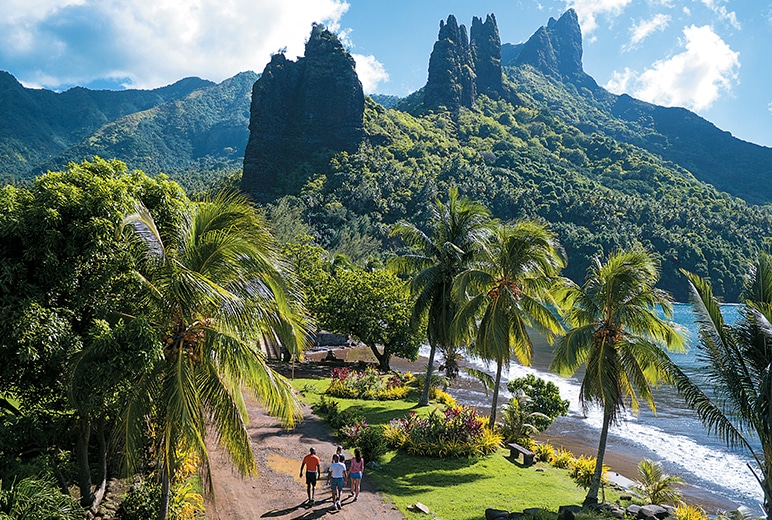
Hatiheu, Nuku Hiva, Marquesas Islands
Author Robert Louis Stevenson favored Nuku Hiva’s arching Hatiheu Bay for its enchanting, picture-postcard setting, lined with black sand and crowned by towering basalt cliffs. A visit to Hatiheu promises discovery both cultured and rare. Rife with archaeological sites, the ancient village is best known for its petroglyphs of human figures, turtles, and fish, as well as its marae (traditional temples) and tohua (open-air gathering places)–the most scared of these being the me’ae l’ipoka, protected by a massive banyan tree.
Learn more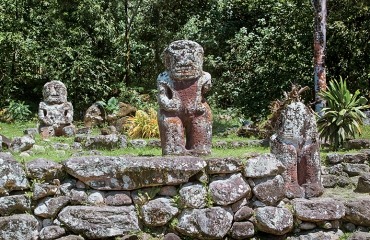
Atuona, Hiva Oa, Marquesas Islands
Above the steady rumble of the Pacific surge, the sharply sculpted mountains of Hiva Oa hide their summits in the mists of rain-filled clouds. The largest and most fertile island in the southern group of the Marquesas, Hiva Oa has deep valleys, lush plateaus and thickly wooded forests. The main town of Atuona is a favorite port of call for yachters, who dock within Traitors Bay. And, Paul Gauguin himself called the town home and is buried on the island.
Learn more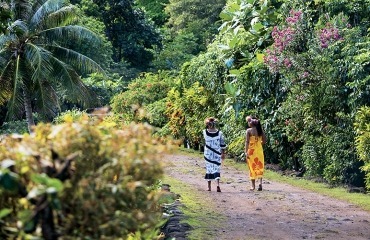
Hapatoni, Tahuata, Marquesas Islands
Its name means “sunrise” in Marquesan, and this tiny, 19-square-mile island in the Marquesas archipelago is just as beautiful as the name suggests. Visitors arrive via the charming seafront village of Hapatoni, with tamanu trees shading an ancient paved royal walkway and the air smelling of tiare and frangipani. The island’s beauty extends to its architecture too, especially its huge Catholic church, which was built by the Vatican and decorated with stunning stained-glass windows and beautiful local carvings.
Learn more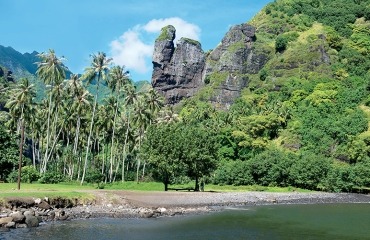
Omoa, Fatu Hiva, Marquesas Islands
In the village of Omoa, you will find a pretty church and the Musée Grelet, a small private museum founded by a 19th-century Swiss immigrant to this island. Exhibits include war clubs and spears, adzes, tikis, stone pestles, and carved-wood koka’a bowls. Fatu Hiva is renowned for its handicrafts, especially tapa (decorated beaten bark cloth); you may also see artists at work on other crafts, including hand-painted pareos and monoi, a scented coconut oil, and many ancient petroglyphs, or rock art including one of the largest in the Marquesas: that of the famous paoa, which looks like a huge tuna fish carved into the rock
Learn more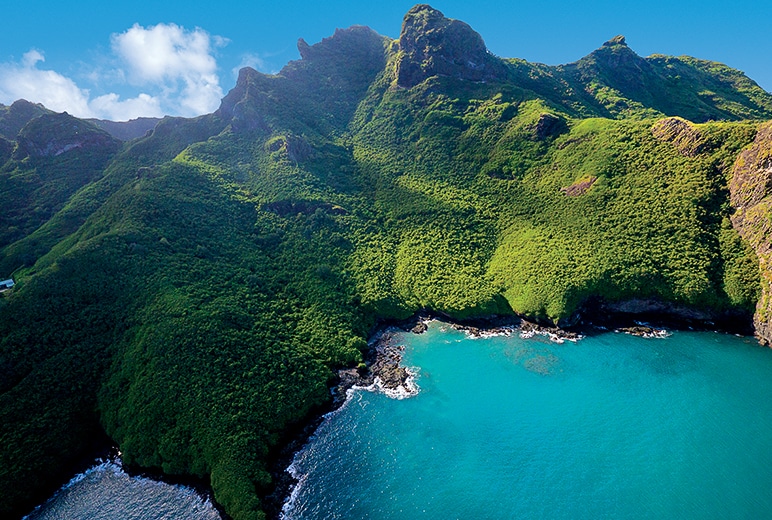
Taiohae, Nuku Hiva, Marquesas Islands
A charming seafront village, Taiohae is the administrative, economic, educational, and health center of the Marquesas Islands and the gateway to the island of Nuku Hiva’s natural beauty. Visitors are enchanted by lush valleys, impossibly blue bays, sky-high waterfalls, and ancient ruins—it’s no wonder Nuku Hiva is called “Mystic Island.”
Learn more